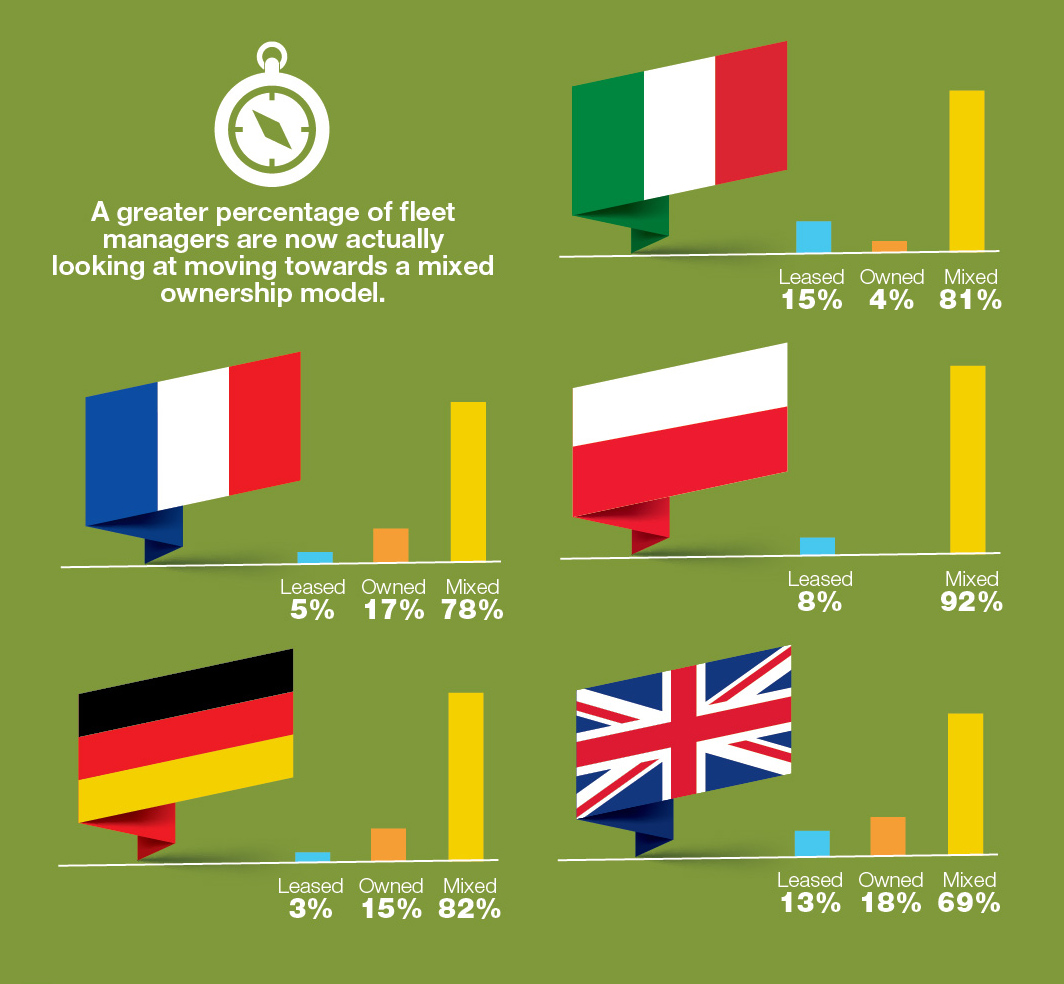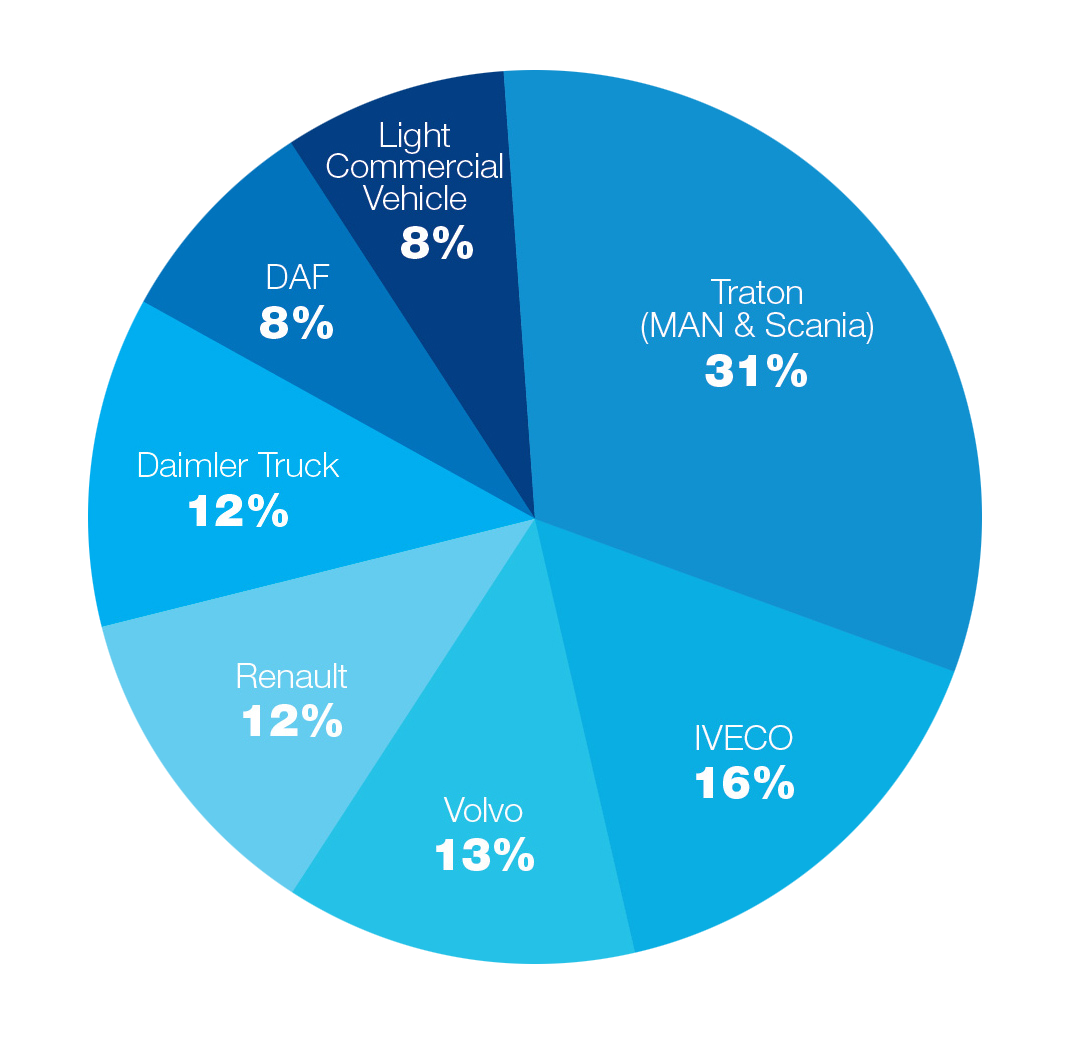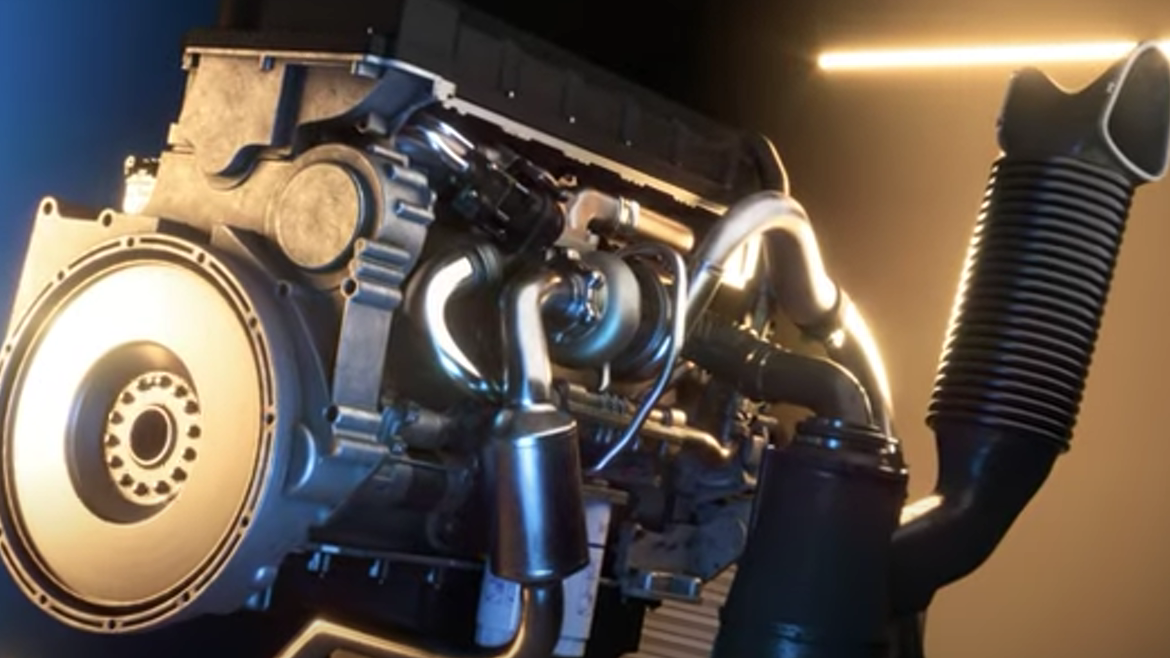Like many businesses, the past two years have been difficult for commercial fleets. Supply challenges, increased demand for goods, and rapidly increasing costs, all while trying to sustain a profitable business. Lubrizol surveyed European fleets to better understand the impact of these trends, to explore changes in commercial vehicle original equipment manufacturer (OEM) models and fleet buying behaviors and learn how changes in fleet composition and ownership models impacted maintenance practices and lubricant needs.
From a survey of 623 participants, we identified some distinct trends. The participants held a range of roles and responsibilities in a variety of fleets including long and short-haul trucks, medium (3.5 to 16mt) and heavy duty (16+mt) vehicles and end users. The following trends were identified:
- Fleet owners and managers seek greater flexibility
- There is a trend towards leasing vehicles as opposed to owning
- Fleets are using an increasing variety of different trucks, placing an emphasis on having an effective universal engine lubricant solution
Additional findings and information are contained below.
Own, Lease, or Mixed?
Each region differs in terms of its trend towards an owned, leased, or mixed ownership model. But despite these regional differences, the general trend is towards a mixed ownership model. 
Interview Spotlight:
Based on multiple interviews with UK independent leasing companies, it was emphasized that one of the biggest costs to fleet managers is fuel. Having the option to lease gives fleet managers access to more aerodynamic trucks, which enable better fuel efficiency and reduce overall running costs. Leasing allows access to the latest truck technology, which is safe, compliant and a great incentive for drivers.
Why Are Fleet Leasers Moving Towards Mixed Ownership?
We asked fleet managers about the key benefits of leasing. The top three advantages that they highlighted were improved vehicle condition, better fuel efficiency and improved safety. The added benefit of lower initial investment can help fleet managers retain their workforce in addition to having the flexibility to access modern truck technology every few years, helping fleet managers to improve fuel economy.

The Impact of Fleet Leasing on Maintenance
How Do Ownership Models Impact Lubricant Choice?
Survey participants were asked how different ownership models impacted their decisions on maintenance and lubricant choice.
For fleets that are primarily leased, maintenance schedules as well as lubricant choices are either mandatory or recommended by the leasing company. The majority of fleets make lubrication decisions based on either the current standard of the truck or the recommended OEM specification. The same holds true for fleets that are predominately owned. When asked how decisions are made on maintenance schedules for owned vehicles, decisions once again tend to be based on recommendations from the OEM.
The trend is clear—OEMs have a significant influence on both maintenance and lubricant choice in both the leased and owned commercial vehicle space.
Fleets can source their leased vehicles direct from the OEM or from independent finance companies and workshops. Regardless of the lease provider, we learned that OEMs still are the most common source of information regarding maintenance schedules and engine lubricant recommendations.
Fleet managers recognize the importance of returning a vehicle in good condition at the end of its lease. Fleet managers also tend to purchase a maintenance contract to increase the resale value of the vehicle. If a fleet manager did not sign up for any maintenance services, any issues with the truck are charged as penalties at point of return. Therefore, to minimize risk and cost, a popular option for fleet managers is to purchase the maintenance agreement with the leasing contract. The influence of the OEM in this space is strong and having an approved lubricant which can meet the testing requirements set out by the OEMs is key for oil marketers.
European Fleet Composition
Trucking Brands
Participants in our survey also specified which OEM trucks they had in their fleet. The chart indicates that fleets tend to consist of multiple different OEM trucks. Also, the percentage split is shared evenly across the various OEMs. Based on the diversity of the typical European fleet, oil marketers should expect to see increased demand for a universal solution as part their portfolio to ensure that they address the needs of multiple different OEM performance requirements.

Our View
It is clear that European fleets use a multitude of OEM truck models and are progressively shifting toward mixed ownership models. Having the right universal engine lubricant is key.
OEMs have a significant influence across the value chain as leasing becomes more popular and fleets choose to lease directly from the OEM. This provides an opportunity to educate fleet owners about OEM recommendations and the value they bring.
Please view and download this PDF containing additional details and summaries of the survey.









